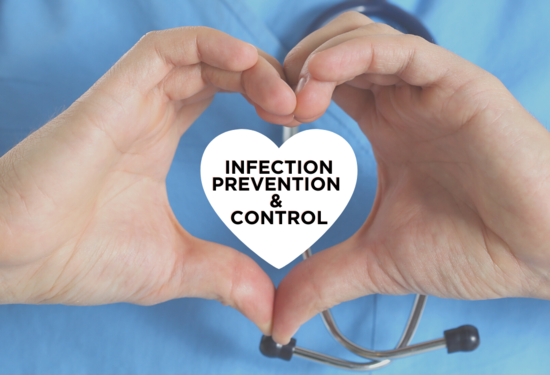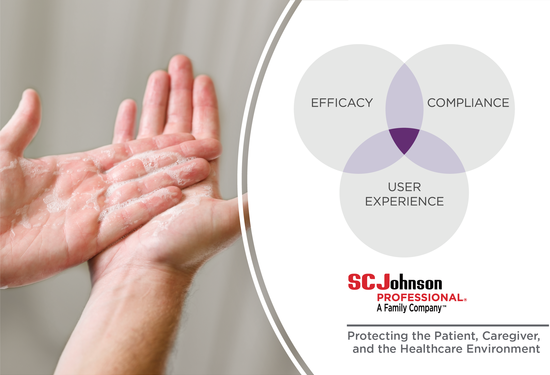Infection Prevention: What Ingredients are in Your Hand Hygiene Products?
By SC Johnson Professional Healthcare
Proper handwashing techniques paired with effective products can play a leading role in healthcare infection prevention (IP). According to the Centers for Disease Control and Prevention (CDC), healthcare providers wash their hands and sanitize up to 100 times per day, depending on their patient load[1]. However, not all soaps and hand sanitizers are created equal. There are many choices on the market, and it is important to review the complete product ingredient lists to make the most informed selection.
Continuous handwashing can sometimes cause the skin to be dry, itchy, irritated, cracked or even cause bleeding – a condition known as irritant contact dermatitis (ICD).[2] According to the American Academy of Dermatology, dry, cracked skin makes it easier for germs and bacteria to get into your body[3]. Since providers can’t simply stop washing their hands if they experience adverse effects, infection preventionists should take an active role to select products with mild, non-drying ingredients. Such products don’t necessarily sacrifice efficacy.
Tips to Navigate Ingredient Lists and Product Labels
Infection preventionists should scrutinize the ingredient list of hand hygiene products and fully understand ingredients included in the formula before implementing them in their facility. Below are some helpful tips to be mindful of:
- Choose mild, active ingredients for antimicrobial soaps. There are many antimicrobial options available, but it’s important to ensure the active ingredient is safe and effective under FDA rules. Consider a mild handwash that contains Benzalkonium Chloride (BZK) that is designed for frequent hand washing in healthcare settings. This is proven to eliminate 99.999% of Acinetobacter baumanni, MRSA, VRE and CRE. For surgical scrubs, an antimicrobial skin cleanser with Chlorhexidine Gluconate (CHG) is a popular choice. CHG is one of the most accepted active antimicrobial agents on the market.
- Consider products that are perfume and dye-free. Selecting products that are perfume and dye-free can help minimize the risk of allergic reactions for employees with sensitive skin. While some facilities require the use of these products, those that don’t may have many users that prefer them.
- Look for non-drying formulated products. Products with non-drying formulas can leave skin feeling smooth and hydrated after use. These products are designed for high-frequency use with healthcare providers in mind to help minimize dry skin and irritation that can sometimes result from frequent handwashing and sanitizing.
- Select hand sanitizers wisely. Many options are available, so it’s important for Infection Preventionists to select hand sanitizers that users like to encourage proper hand hygiene. Foam options with proper dosing are often preferred in healthcare settings, rather than a runny gel or liquid. Look for moisturizing, glove and CHG-compatible products with ethanol as the active ingredient. The CDC recommends that sanitizers have at least 60 percent alcohol to be effective[4].
- Review Safety Statements – Product labels should have required safety statements under FDA rules. It’s also important to review all third-party certifications to fully understand what they mean and if they will benefit users.
Clean Hands with Confidence
For the frequency that healthcare workers are required to wash their hands, it’s important to provide them with mild, yet effective handwashes, scrubs and sanitizers that help protect the skin. Infection Preventionists have the opportunity to review and select products with transparent ingredient lists and safety labels to provide the best hand hygiene products for their facilities.
For more information about SC Johnson Professional products and solutions for healthcare facilities, visit www.scjp.com/en-us/healthcare.
Return to news



